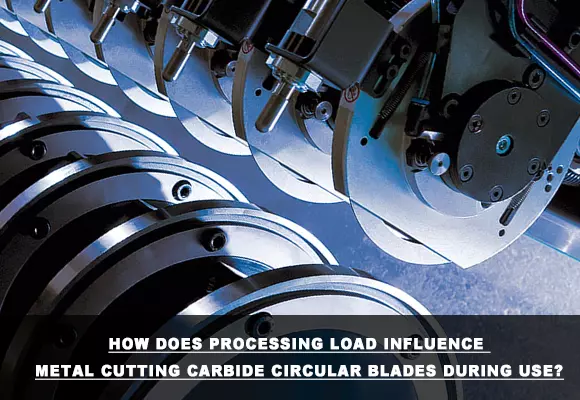
How Do Various Loads Influence Metal Cutting Carbide Circular Blades During Operations?
During metal cutting and slitting, the tungsten carbide circular blade is easy to deform until removed in form of chips. The deformation process requires much energy, and carbide circular knives for metal cutting will bear a variety of mechanical, thermal, chemical, and friction loads. These loads will cause wear and tear to the tungsten carbide circular blade eventually. Therefore, in order to achieve an extraordinary metal cutting process, it is necessary to balance the energy consumed by tungsten carbide circular blades, when cutting metal, and the ability of carbide circular knives for metal cutting to stably carry the cutting load.
With correct understanding and treatment of cutting parameters, groove type, material, and other factors, mechanical engineers can realize an efficient and economical metal cutting process. Mechanical load is relatively stable in turning, but it will change from small to large and then to small in milling. This passage analysis will focus on the processing load’s influence on carbide blades.

Processing load
Pressing loads acting on tungsten carbide circular blades are divided into four basic categories: mechanical, thermal, chemical and friction.
Mechanical pressure will accelerate blades’ wear and failure. Intermittent cutting caused by porosity or slag inclusion in machined parts will produce impact load, which will lead to breakage or breakage carbide circular knives for metal cutting .

Thermal load due to deformation of workpiece material will generate heat, which will cause the temperature to rise to 800-900 degrees Celsius, resulting in deformation and blunt metal cutting carbide circular blades. The combination of heat and pressure can also cause chemical changes between cutting material and workpiece material, resulting in diffusion or deep pit wear.
Friction between carbide blade and chip will produce friction wear and erosion wear, which is the result of friction load. Through tribological inspection of contact between surfaces, it can be determined how much influence they will have on each other’s shape change under specific temperatures and pressure.

Four load categories are not independent, but the result of interaction and comprehensive influence. The power of the machine, the rigidity of the fastening device, and even the skills of the machine operator will affect the processing effect. Interaction of loads can produce various results and eventually lead to tool wear and failure.
The end of speed and predictability of blade service life depends on the ability of carbide circular knives for metal cutting to withstand the load generated. In order to prolong service life and ensure process safety, the processing load must be reduced to a level lower than tool load-bearing capacity within a certain period of time. Key factors affecting this capability include cutting groove type, cutting material, and coating.